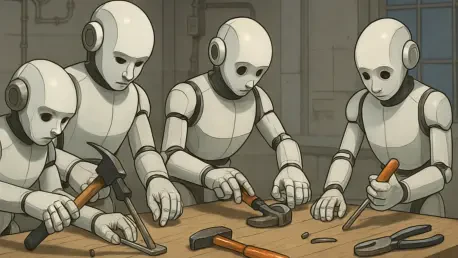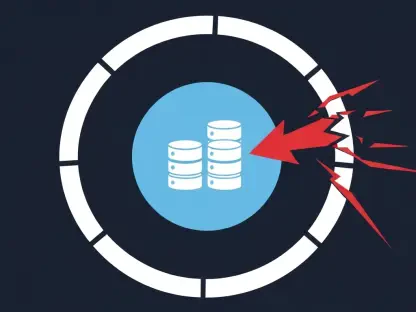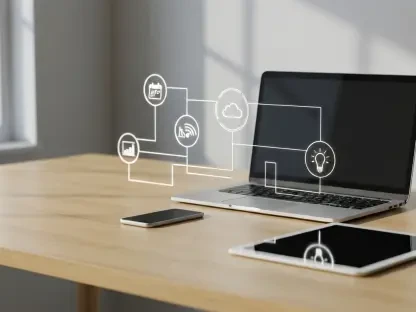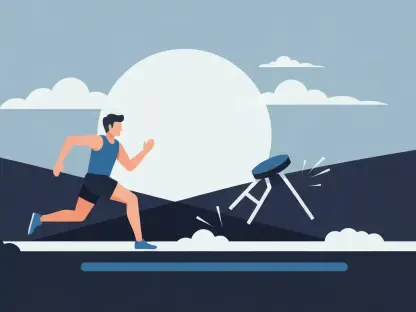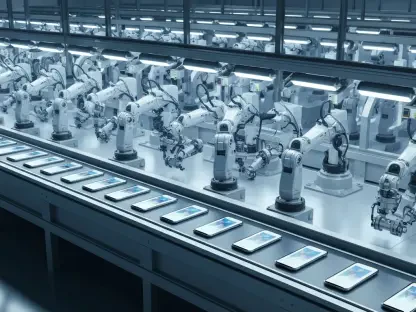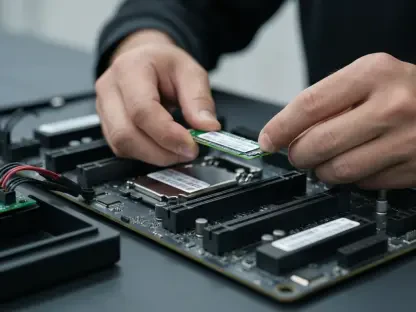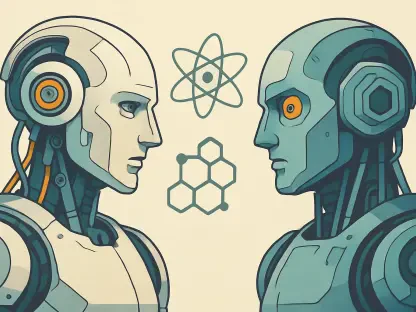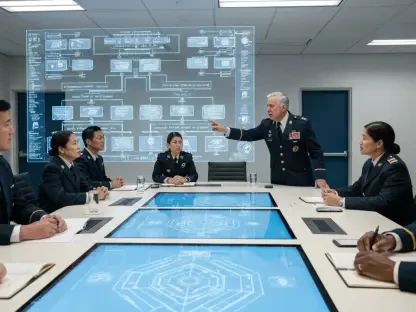Imagine a world where robots can pick up a hammer or flip an egg in a pan simply by watching a video of a human doing it—no programming, no fancy sensors, just pure observation. This captivating vision is becoming a reality through a groundbreaking framework called “Tool-as-Interface,” developed by researchers from the University of Illinois Urbana-Champaign, Columbia University, and UT Austin. This innovative approach tackles a fundamental question: Can robots learn complex tool-use skills by observing human actions in everyday videos, without relying on specialized equipment or extensive coding?
The significance of this research lies in its potential to transform robotics from a field of rigid, pre-programmed machines into one of dynamic, adaptable learners. Much like children who learn by mimicking adults, robots equipped with this framework could acquire skills by watching unstructured, real-world content, such as smartphone recordings or online clips. This shift promises to break down barriers that have long confined robots to repetitive tasks in controlled environments.
At the heart of this advancement is the challenge of moving beyond traditional robotic limitations. Current systems often struggle with unpredictability, requiring precise instructions for every action. The “Tool-as-Interface” framework aims to bridge this gap, enabling machines to interpret and replicate human tool use in a way that feels almost intuitive, opening doors to a new era of robotic capability.
The Context and Significance of Observation-Based Learning
Historically, robotics has been constrained by the need for pre-programmed tasks, expensive sensors, and labor-intensive methods like teleoperation, where humans manually guide robots. These limitations make it difficult for machines to adapt to new or unexpected situations, hindering their practical use in diverse settings. The reliance on specialized setups often means that only experts with access to advanced technology can train robots, creating a significant bottleneck in scalability.
This research marks a pivotal step toward overcoming such hurdles by leveraging unstructured data from everyday sources like YouTube or personal recordings. By enabling robots to learn from widely available visual content, the approach democratizes training, reducing the need for costly infrastructure. This could fundamentally change how robots are integrated into society, making them more versatile for tasks in homes, offices, or industrial environments.
The broader impact of observation-based learning extends to technology and societal integration. If robots can acquire skills from human videos, their deployment in public spaces could become more seamless, enhancing their role as assistants in daily life. This accessibility also fosters innovation, as non-experts could contribute to robotic training by simply sharing videos, paving the way for a collaborative future between humans and machines.
Research Methodology, Findings, and Implications
Methodology
The “Tool-as-Interface” framework relies on a sophisticated process to teach robots tool use through observation. It begins with capturing human actions using two smartphone cameras, which provide the raw video data. These recordings are then processed with a vision model known as MASt3R to reconstruct 3D scenes, allowing a detailed understanding of the spatial environment in which the tool is used.
Further refinement comes through a technique called 3D Gaussian splatting, which generates additional viewpoints of the scene, enhancing the robot’s perspective beyond the original footage. A system called Grounded-SAM plays a crucial role by digitally isolating the tool’s trajectory, effectively removing human elements from the video. This ensures the focus remains on the tool itself, capturing its orientation and interaction with objects rather than mimicking specific hand movements.
This tool-centric approach is a cornerstone of the framework, as it allows skills to be transferable across various robotic configurations. By prioritizing the tool’s behavior over the specifics of human anatomy or robot design, the system ensures that learned actions can be applied regardless of differences in mechanical structure or camera placement, making it highly versatile.
Findings
Testing of the framework revealed impressive results in enabling robots to perform complex tasks. Activities such as hammering a nail, scooping meatballs, and flipping food in a pan were successfully executed, showcasing a 71% higher success rate compared to traditional teleoperation methods. These tasks were chosen for their demand for precision, speed, and adaptability, far beyond basic robotic functions.
Efficiency in training emerged as another significant advantage. The use of readily available video content accelerated data collection by 77%, streamlining the learning process compared to conventional approaches that require extensive setup and manual input. This speed underscores the practicality of scaling such a system for broader applications.
Perhaps most striking was the real-time adaptability demonstrated during testing. For instance, robots could continue scooping items even as more were added mid-task, responding dynamically to changes in the environment. This capability highlights the potential for robots to operate in unpredictable, real-world scenarios, a critical factor for their practical deployment.
Implications
On a practical level, this framework lowers the barriers to robotic training by eliminating the need for specialized hardware or expert oversight. This accessibility could enable small businesses, educators, or even individuals to train robots using simple video tools, democratizing access to advanced technology and fostering widespread adoption.
Theoretically, the research shifts the paradigm in robotics and artificial intelligence from rigid, task-specific programming to flexible, observation-driven learning. This change aligns with broader trends in machine learning, where systems increasingly draw insights from unstructured data, potentially redefining how robotic skills are developed and refined over time.
Looking at societal impacts, the vision of robots learning from a global library of human-recorded videos is transformative. Such a repository could accelerate the integration of robots into diverse industries, from healthcare to hospitality, by providing an ever-expanding pool of skills. This scalability suggests a future where robots continuously evolve alongside human innovation, becoming indispensable partners in daily life.
Reflection and Future Directions
Reflection
The journey of developing this framework has been marked by moments of excitement, such as witnessing a robot flawlessly flip an egg, balanced against the sobering reality of technical challenges. Assumptions like the rigid connection between tool and gripper simplified initial testing but limited applicability to more flexible scenarios, revealing gaps that need addressing.
Significant obstacles, including errors in 6D pose estimation and reduced realism in synthesized views, were encountered during the process. While some of these issues were mitigated through iterative adjustments to the vision models, others remain as acknowledged limitations, underscoring the complexity of translating human observation into robotic action.
Reflecting on the scope, expanding the study to include a broader range of tools or multi-step tasks could have provided deeper insights. Testing varied implements or sequences requiring sequential decision-making might have further validated the framework’s robustness, offering a more comprehensive picture of its potential and shortcomings.
Future Directions
Enhancing the perception system stands as a key priority for advancing this technology. Enabling robots to generalize skills across different tool variations, such as using diverse hammers or pens, would significantly broaden the framework’s utility, making it adaptable to an array of real-world objects.
Improving robustness for unpredictable conditions is another critical focus. Addressing current limitations in pose estimation and view synthesis could ensure more accurate and reliable performance, especially in dynamic or cluttered environments where precision is paramount.
Exploring the scalability of training through vast digital content offers exciting possibilities. Investigating how crowdsourced videos could further reduce training barriers might unlock unprecedented growth in robotic capabilities, allowing machines to learn from a collective human knowledge base and adapt to an ever-widening range of tasks.
Shaping the Future of Robotic Learning
The “Tool-as-Interface” framework stands as a pioneering achievement in robotics, empowering machines to learn tool use through human observation with remarkable success rates and efficiency. By achieving a 71% improvement over traditional methods and slashing training time by 77%, this approach redefines what robots can accomplish with minimal resources. Recognized with the Best Paper Award at a prestigious ICRA workshop, this research solidifies its place at the forefront of technological innovation.
This breakthrough underscores the importance of adaptable, accessible robotic systems in today’s world. It moves the field closer to a reality where machines learn as naturally as humans, interpreting everyday videos to master complex skills. The shift toward observation-based learning holds transformative potential, promising robots that can seamlessly integrate into diverse aspects of life.
Looking back, the strides made through this framework inspired a rethinking of robotic training, proving that ordinary videos could serve as powerful teaching tools. As a next step, prioritizing the development of more robust perception systems and tapping into global video repositories could amplify these gains. By fostering collaboration between researchers and everyday contributors, the robotics community can build a future where machines evolve continuously, becoming true companions in navigating the complexities of human environments.
